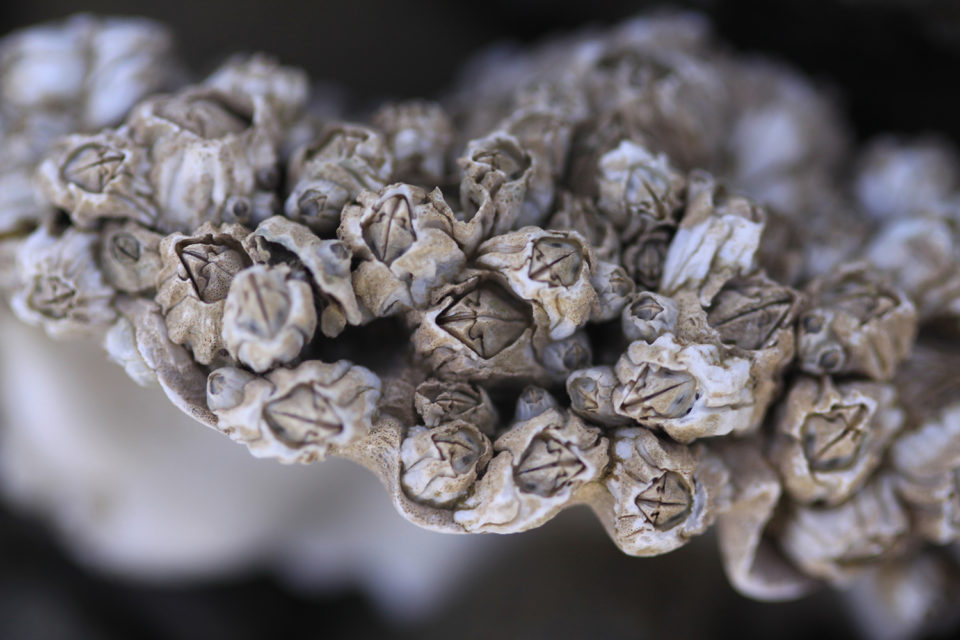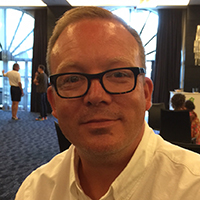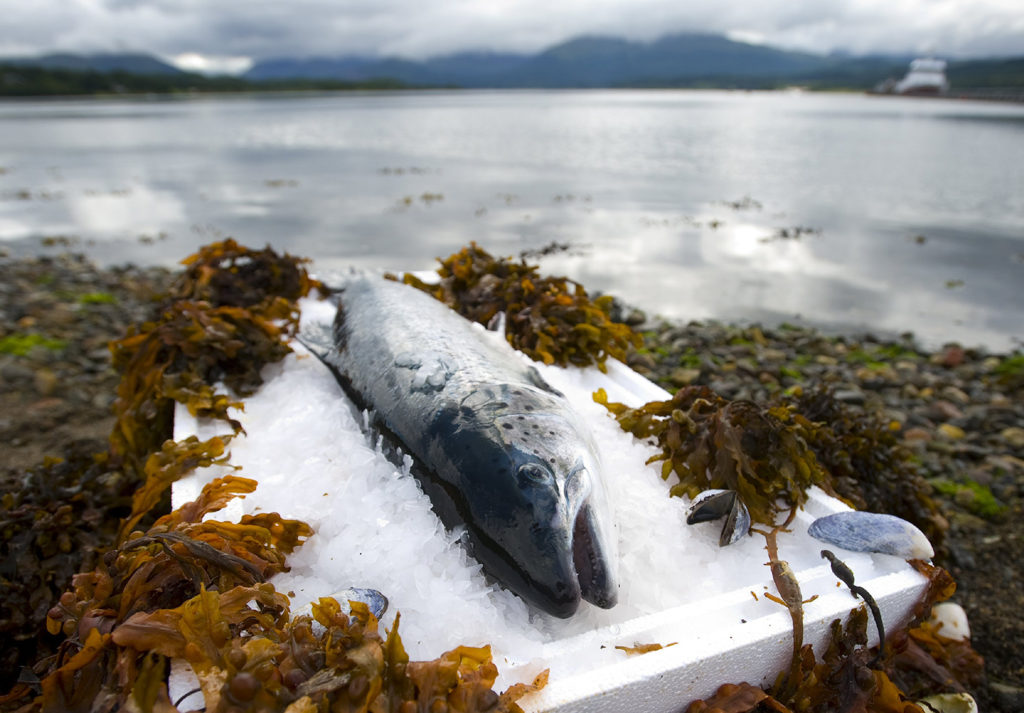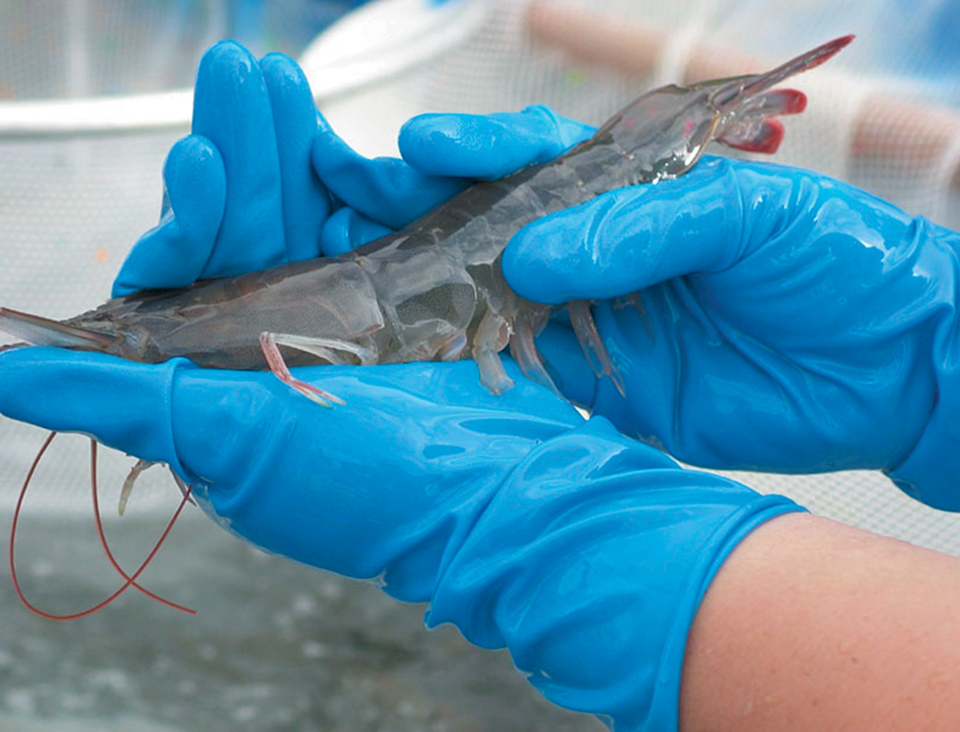Planktonic’s cryopreserved nauplii free of vibrio and other bacterial parasites

Though low in availability and high in variability, newly hatched artemia metanauplii is the go-to feed for larval marine fish production in Europe. This despite it also being a potential vector of pathogenic bacteria and viruses, which lead to reduced fish survival rates.
However, Norwegian startup Planktonic AS believes that it has hit upon a viable alternative to the traditional hatchery live diet in the form of a specific nauplii that’s harvested from the ocean and cryopreserved.
Planktonic’s solution utilizes that age-old scourge of seafarers and sea life everywhere – barnacles. Specifically, it uses the eggs extracted from inside the barnacles before they have the opportunity to start feeding.
They are virtually sterile at this stage, Rune Husby, CEO of Planktonic, informed the Aquaculture Innovation Europe conference, held in London in mid-September. Then, once harvested and filtrated, the nauplii undergo the “relatively straight forward” cryopreservation process, which entails controlled freezing ahead of placement in liquid nitrogen. This disinfects the product further still.
“Vibrio and other bacterial parasites have never been found in the cryopreserve,” said Husby.
Approximately 1.4 billion marine fish fry are produced in Europe annually with the Mediterranean’s sea bass and sea bream sector accounting for 94 percent of that total. The remaining 6 percent comprises several species, although production of cleaner fish such as ballan wrasse and lumpfish is currently the fastest-growing sector as salmon farmers attempt to combat sea lice challenges. At the same time, just 3,000 metric tons (MT) of artemia is available to marine hatcheries globally, most of which is produced in the United States.
“The cost of the larvae production in the live feed stage in Europe is about EUR 84 million ($98.3 million) per year. This total is feed, man-hours, chemicals and electricity, and this is the market we will tap into in a disruptive way because we will make many of these costs obsolete,” said Husby.
He added that if aquaculture is going to fulfill its expected growth rates, then fish farming needs alternatives to artemia, stressing that the widely accepted “gold standard” is natural marine zooplankton, although using such organisms hadn’t proved economically viable thus far.
“All of the feed products try to mimic the nutritional profile of the marine zooplankton. There are numerous scientific reports that prove if you give fish larvae marine zooplankton and artemia you will see that the fish that has the former [diet] will have better growth, better survival, better stress resistance and better pigmentation,” said Husby. “This is because the fish is getting the feed that it is used to. With marine zooplankton, you get the essential fatty acids DHA and EPA; those aren’t in artemia, it’s not a marine species.”
Planktonic’s concept is protected by 16 patents in European countries and Australia, giving the company the exclusive rights to use barnacle nauplii as fish feed. Five more patents are due to follow. It has also secured three licenses to farm barnacles in Norway and is looking at other potential rearing areas inside and outside of the Scandinavian country that would position the business close to key markets.
Instead of having to follow the laborious task of cultivating plankton, artemia or rotifers in tanks on land and feeding them with enrichment, users of Planktonic’s solution receive a sort of cryo-canister containing 80 kg of product. This equates to about 4 billion nauplii. The hatchery manager selects the amount of feed (frozen pellets) required and puts them into seawater to thaw and to remove the protective agent; they are then put into another seawater tank to revitalize.
“Over six hours they are going from minus-196 degrees to +12, 15 or 20 degrees-C and they are swimming again,” he said. “They are alive because all we have done is stop their metabolism with the cryopreservation process.”
In commercial trials earlier this year, 50 percent larger bream juveniles and 75 percent larger bass were evidenced along with better survival and improved resistance, revealed Husby. “This is due to the fact that all of the tanks with artemia-produced vibrio, while ours didn’t.”
Similar results have been seen in Norway with the wrasse and lumpfish. Indeed, Planktonic has secured a 30 percent share of this particular market in just two years.
“[Our] particular species of nauplii is perfect as a live feed; it has an optimal nutritional profile” said Husby. “The harvest method (scraping off purpose built inter-tidal and sub-tidal structures) also overcomes the challenge of gathering plankton in the sea that’s from the same species, in the same life stage and of the same size. It’s a cost-effective solution.”
Moving forward, as well as increasing its barnacle production, Planktonic wants to use the technology to introduce additional new products that overcome rotifer and late artemia replacement issues, Husby shared.
Follow the Advocate on Twitter @GAA_Advocate
Author
-

Jason Holland
Jason Holland is a London-based writer for the international seafood, aquaculture and fisheries sectors. Jason has accrued more than 25 years experience as a B2B journalist, editor and communications consultant – a career that has taken him all over the world. He believes he found his true professional calling in 2004 when he started documenting the many facets of the international seafood industry, and particularly those enterprises and individuals bringing change to it.
Tagged With
Related Posts

Innovation & Investment
Artemia, the ‘magic powder’ fueling a multi-billion-dollar industry
Artemia, microscopic brine shrimp used as feed in hatcheries, are the unsung heroes of aquaculture. Experts say artemia is still inspiring innovation more than 50 years after initial commercialization. These creatures are much more than Sea-Monkeys.

Intelligence
Aquaculture UK: Stepping up to the plate
There’s considerable opportunity to grow the UK aquaculture industry. At the Aquaculture UK exhibition and conference in Aviemore, Scotland shows the way.

Health & Welfare
A study of Zoea-2 Syndrome in hatcheries in India, part 1
Indian shrimp hatcheries have experienced larval mortality in the zoea-2 stage, with molt deterioration and resulting in heavy mortality. Authors investigated the problem holistically.

Health & Welfare
Biosecurity principles for sustainable production using SPF shrimp
Basic components of biosecurity include knowledge of diseases, adequate detection methods and the use of “clean” shrimp stocks.

